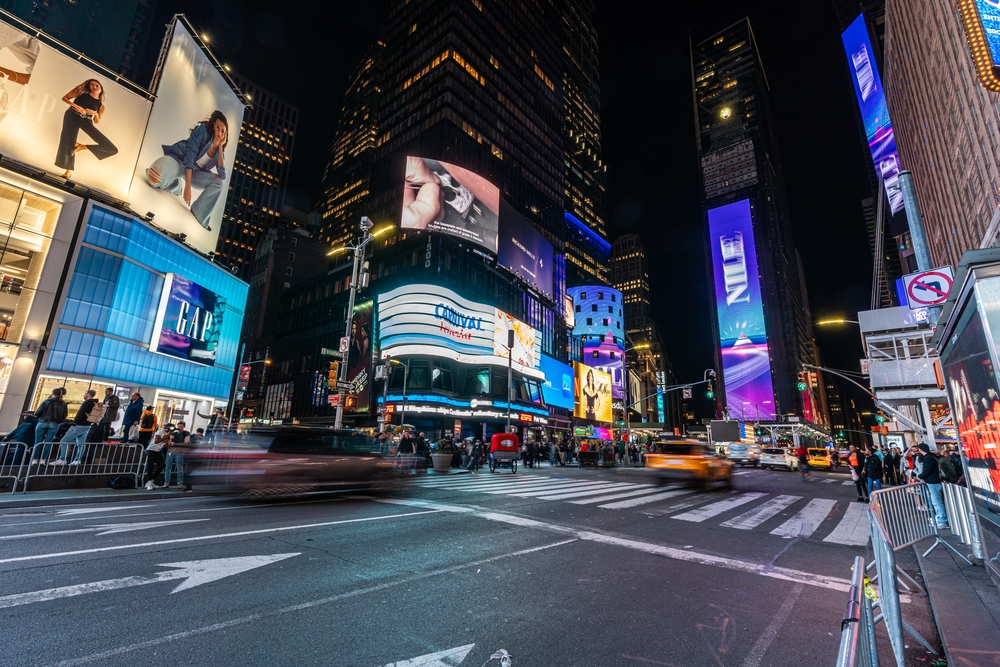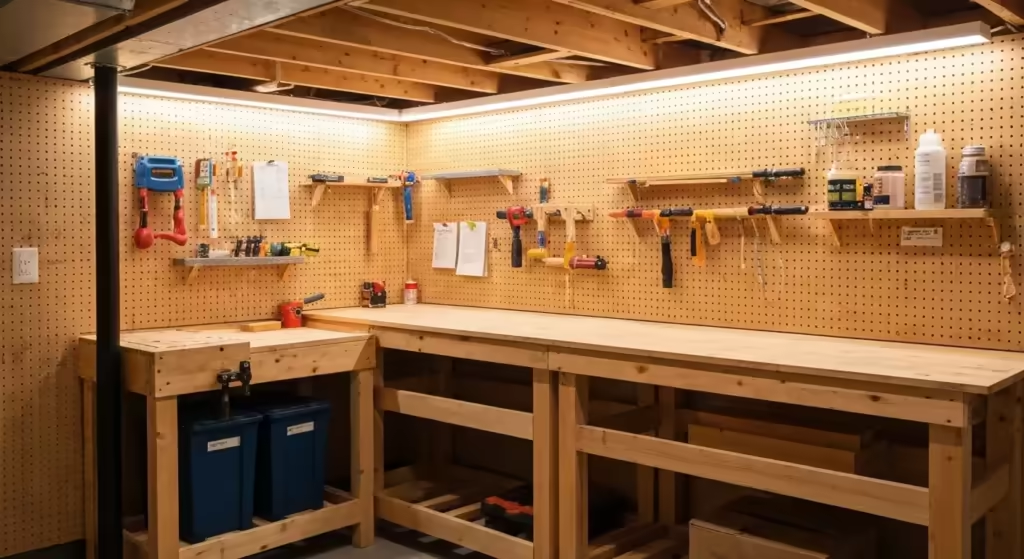Is Moving to a New City Worth the Financial Strain? Here’s My Story
I’ve always wanted to live in New York City. For years, I have fantasized about moving to a city that never sleeps and has endless possibilities. It wasn’t just a fleeting thought; it was a deep-seated dream that colored my quiet moments. The breathtaking buildings scraping the sky, the constant, humming energy of millions of people living their lives in tandem, the rush of the yellow cabs, and even the cacophony of traffic seemed so magical to me from afar. I would picture myself walking through Central Park in the fall, catching a Broadway show on a whim, and discovering hidden gem restaurants in Greenwich Village. But life, as it often does, had other plans for me. For more than two decades, me and my husband, Mark, built a comfortable and predictable life in a small town, far away from the dazzling, chaotic lights of New York.
Montclair, New Jersey is a beautiful place situated about 40 miles outside of Manhattan, but it never fulfilled my dreams. It was charming, with its tree-lined streets, lovely homes, and a strong sense of community. We had a great life there, truly. We had our favorite local diner, we knew our neighbors, and our mortgage was manageable. Even though we had everything we technically needed for a happy existence, I still used to dream about New York City’s vibrant, unpredictable magic. The quiet predictability of Montclair, once a comfort, began to feel like a cage. We had a peaceful life, but after years and years of meticulous saving and countless late-night debates, Mark and I finally found our courage and decided to make the monumental change. We sold our home of twenty years, packed our entire lives into boxes, and followed my lifelong dream.
Isn’t that crazy? At an age when most of our friends were settling deeper into their suburban comforts and planning for a quiet retirement, I convinced my beloved husband to leave everything he knew behind and start a new chapter in our lives. It was an enormous ask, and I’ll forever be grateful for his trust in me and in our partnership. It wasn’t easy to start over, not by a long shot, and I can say with absolute certainty that without him by my side, offering his steady support and calm logic, I couldn’t have done it.
I was so fascinated and utterly swept away by the idea of living in the city of my dreams that we ended up overlooking a lot of critically important details. In my excitement, I romanticized the transition, picturing a seamless move into a chic city apartment. The reality was a splash of cold water. We were quickly forced to discover that the transition from a small suburban town to one of the most expensive cities in the world wasn’t as seamless as I’d imagined. The practicalities were overwhelming. I dreamt about this moment my whole life, but in my daydreams, I conveniently skipped over the part about broker’s fees, co-op board applications, and the sheer logistical nightmare of moving furniture into a fourth-floor walk-up. I didn’t really realize how much work, both emotional and financial, needed to be done in order to achieve my goal.
It wasn’t only about finding a new place to live; that was just the first, albeit massive, hurdle. We needed to fundamentally start over and manage a completely new financial strategy. Our suburban budget was obsolete overnight. All the unexpected expenses—the cost of the move itself, higher security deposits, and the immediate need for city-specific items—drained our savings at an alarming rate. So, it was really challenging to find our balance and build a new life without drowning in debt before we even had a chance to enjoy the city. But before we get to the nitty-gritty of the financial problems and the solutions we found, let’s start with the beginning: the decision that changed everything.

The Decision to Move
I always talked openly with my family members and friends about my dream of living in New York City. It was a well-known part of my personality, the “one day” fantasy I’d bring up at dinner parties. So, my husband wasn’t surprised when I first proposed the idea of actually moving. He just didn’t think I was serious at first. He loved our life in Montclair—the garden he’d cultivated for years, his weekend golf games, the familiar faces at the hardware store. It was hard for him to accept that I was serious when I said that I wanted to start over at 50 years old and embrace the life of retirement not on a quiet beach, but in a city that never sleeps and can fulfill my childhood dream.
Moving to a new city seemed like a massive and scary change, one that was full of uncertainty and financial risk. Mark was practical. He brought up the cost, the noise, the smaller living space, and the distance from our established network of friends. All of his points were valid, and they formed the basis of our many long conversations. However, I can proudly say that after months of discussion, heartfelt pleas, and a few detailed spreadsheets I put together, I made Mark accept the challenge. The turning point came when he saw it not as leaving our life behind, but as starting a new adventure together. He agreed to sell our home and live our lives to the fullest. Once he was on board, his enthusiasm matched my own. We slowly but surely started the process of figuring out where we would live in the city, poring over maps and neighborhood guides like students before a final exam.
The hardest part, by far, wasn’t about the emotional challenge of leaving our old life; it was the intimidating financial aspect. We were financially comfortable in New Jersey, but New York was a different league entirely. Balancing our savings to survive the high cost of living wasn’t easy at all. We were used to living in a small city where our mortgage payments were affordable, a trip to the grocery store didn’t induce a minor panic attack, and property taxes were high but predictable. New York City presented a financial landscape that was entirely alien to us.
We spent hours and hours researching neighborhoods, combing through listings on StreetEasy, and understanding what kind of apartment we could realistically afford. This research phase was a sobering reality check. We quickly realized that achieving my dream was going to be a lot more expensive than we had imagined, even with our diligent saving. A two-bedroom apartment in Manhattan was out of the question, and even in the outer boroughs, the prices were eye-watering. But we had faith in our ability to adapt and were absolutely determined to make it work. We were a team, and this was our next big project.

The Reality of New York Living
When we finally settled into our apartment in Brooklyn I felt like I was living inside a dream. The first few weeks were a honeymoon period. I’d wake up to the distant sound of a subway rumbling and feel a thrill. I couldn’t believe that after years of hard work and saving, I was risking my financial freedom, just because I felt the need to achieve my biggest dream. But in those moments, it felt entirely worth it. The energy of the city was perfect and we easily got around, exploring our new neighborhood on foot. Mark was also excited and enjoyed the journey of rediscovering ourselves and our marriage outside the comfortable confines of our old life. He found a new favorite coffee shop, and I loved the sheer diversity of people we saw every day.
The problem appeared when I sat down to do our first monthly budget. The honeymoon phase came to an abrupt end. It hit me hard when I realized that rent in the city was way higher than we expected it to be, even after our research. And it wasn’t just the rent; every single expense, such as groceries, utilities, and even a simple laundry run, started to feel like it was draining our savings at an accelerated pace. That first electricity bill was a shocker. It was scary to feel that New York City was far more expensive than anticipated, and our carefully planned budget was already proving inadequate. But we didn’t have anything else to do. We were committed. We pushed our limits, took a deep breath, and did our best to survive and adapt.
Mark and I were both working, but the income we had in Montclair was not enough to maintain a similar lifestyle in New York City. The math simply didn’t work. So, we decided to buckle down and focus on budgeting with a new level of intensity. We held a “financial summit” at our kitchen table and laid everything out. We made some big adjustments, and considering that one of our first and most obvious challenges was transportation, we decided to sell our car. It felt like a monumental step, a true severing of our suburban ties.
In Montclair, our car was extremely useful, a necessity for errands, commuting, and visiting family. In New York City, it was a liability. The costs of monthly parking, insurance, and the stress of traffic were astronomical. Public transportation was more than enough to fulfill our needs. It was way cheaper and, most of the time, much more efficient. So, the subway system, along with the extensive bus network, saved us a significant amount of money and made the process of adapting a little bit easier. We learned the subway map, got our unlimited MetroCards, and embraced the city’s rhythm.
But even with those savings from selling the car, we still needed to find a way to balance everything. The rent was a fixed, immovable beast. The utilities were unpredictable, especially in the winter. We had to cut some of our favorite activities to survive. We used to dine out at least twice a week in Montclair, an activity that became a rare, special-occasion treat in our new city. We learned to love cooking at home again, experimenting with recipes from the diverse ingredients we could find at local markets. We limited our entertainment budget and became extremely conscious of how much we spent on shopping and travel. It wasn’t easy, and it required a daily, conscious effort, but we didn’t have other available options. It was either adapt or fail.
The Rent vs. Buy Dilemma
A few months into living in New York, after the initial shock wore off and we’d settled into a routine, we didn’t have another option but to start to discuss the long-term plan. The big question was whether it was better to continue renting or attempt to buy an apartment. We knew that buying an apartment in New York City was a huge investment, a financial commitment that dwarfed the purchase of our house in New Jersey. We also took into consideration how high the property prices were. It wasn’t as simple as just buying a place; it was mostly about the long-term financial implications of doing so, from property taxes and co-op fees to potential assessments.
We got some assistance from a fee-only financial advisor who specialized in New York real estate. This was one of the best decisions we made. She helped us look past the emotional side of homeownership and focus on the cold, hard numbers. We explored every neighborhood we liked, from the Upper West Side to Cobble Hill, just to understand if it would be a good idea to buy a home or if renting was better for our specific situation. In the end, after much analysis and debate, we opted for a rented flat. Considering that we were still learning the city and had no idea what we were truly doing with our lives in this new phase, it was our best and safest option.
Renting an apartment for a year, and then another, gave us invaluable time to experience living in different neighborhoods and to understand what we truly want and need in a long-term home. We learned that while we loved visiting Manhattan, the quieter, more residential feel of our Brooklyn neighborhood suited us better for daily life. We discovered the importance of being near a good subway line and having a grocery store within walking distance. Basically, renting an apartment gave us the flexibility to make more informed, less-pressured decisions about buying, and I encourage anyone in a similar position to do the same.

8 Financial Tips and Lessons Learned
Moving to New York City is something I dreamt of my entire life, but making that dream a sustainable reality was no small feat. It was a baptism by fire, a crash course in urban economics. We experienced the incredible excitement of a fresh start, but also the gut-wrenching challenges of a tight budget in a hyper-expensive environment. It wasn’t easy, but looking back, it was worth every stressful moment. Without our financial strategies and our commitment to sticking to them, we wouldn’t have made it past the first year. So, I am ready to share everything we learned throughout our journey. Keep reading because you’ll find some key financial tips and lessons that were forged in the crucible of our New York adventure.
1. Start with a strict budget
When we decided to move, one of the first things we did was to establish what we thought was a strict budget. We quickly learned it wasn’t strict enough. A big city like New York doesn’t care at all about your financial comfort zone and you will find shockingly high price tags on everything, starting from rent, utilities, and transportation to a simple cup of coffee. The budget must be realistic and brutally honest. To obtain a correct amount, we started to list our fixed, non-negotiable expenses (rent, insurance, utilities, MetroCard) and then allocate a specific, and much smaller, amount for discretionary spending, such as dining out, entertainment, and shopping.
I already told you how much, I and Mark enjoyed going out for dinner. Well, that line item on our budget had to change dramatically. We went from “dining out” to a “special occasion meal” category. Our detailed list gave us a clear, undeniable view of where our money was going and what we could truly afford each month. Making a habit of tracking every single expense in detail using a budgeting app on our phones became a non-negotiable daily ritual. It was the only way to keep things under control and hold ourselves accountable.
Oh, and don’t let yourself get tricked by the “death by a thousand cuts” spending! A $5 coffee here, a $15 lunch there—it adds up incredibly fast. If you don’t set a clear budget and track your spending, it’s very easy to spend too much on impulse purchases and wonder where all your money went at the end of the month.
2. Embrace public transportation
Owning a car in New York City seemed impossible for us, and we quickly realized it was. Unless you are extremely wealthy or have a job that requires it, it is not financially feasible to own a car in most parts of the city. So, we were forced to sell our car from Montclair and adapt to a totally new lifestyle. We calculated that between our monthly parking garage fee, insurance, gas, and maintenance, the car would have cost us nearly $800 a month. From exorbitant parking fees to the ever-increasing costs of gas, not to mention the soul-crushing nightmare of finding street parking, it just didn’t make sense. Instead, we embraced public transportation with open arms.
Mark, who was initially wary, adapted rapidly to the subway system and it became our primary, easy way to get around the city. We learned the express and local stops, the best transfer points, and the subtle etiquette of subway riding. Believe it or not, a monthly unlimited-ride metro pass became our best friend and saved us a lot of money and stress. We actually started to enjoy our commutes, using the time to read or listen to podcasts. So, embracing the new transportation methods was extremely important in maintaining a balance in our finances. Trust me when I tell you that it saved us hundreds of dollars a month in car expenses.
Living our best life without breaking the bank was not easy, but we can proudly say that we did it. Selling the car was a pivotal moment. All we needed to do was to adapt our mindset from one of car-centric suburban life to one of pedestrian- and transit-oriented urban living. Isn’t adaptation one of the best qualities one can have, especially in a city that is constantly changing?
3. Rent before buy
Oh my God! Please rent before you buy! If I could shout this from a Brooklyn rooftop, I would. This piece of advice is something I can’t recommend enough, especially for newcomers to the city. We first thought that once we arrived in New York City we would immediately purchase a property. We had the proceeds from our house sale and thought it was the “smart” financial move. It would have been a disaster. It would have cost us too much and totally compromised our plan for financial stability. The real estate market is far more complex than you can imagine, with co-op boards, hidden fees, and wildly different neighborhood dynamics. So, after doing a lot of research, we understood that renting, especially for the first year, was a necessity. Talking to friends already living in the city was also extremely helpful; they shared horror stories that quickly convinced us.
So, renting allowed us to adjust to the city’s vibe and style without a half-million-dollar commitment. We essentially “test-drove” our neighborhood for a year. In case we would have rushed into buying, we would have probably been making a completely wrong decision and ended up in a bad neighborhood for our needs, or in a building with financial problems. Buying a property is not simple, and it’s a highly illiquid asset. You should always take your time and make an informed decision, especially when it comes to big investments that can completely change your life and financial future.

4. Adjust to the high cost of living
We were used to a completely different cost of living in Montclair, so New York exceeded our expectations in every category. It wasn’t just housing; it was everything. In the city of my dreams, every penny counts, and the prices of everything are significantly higher, even for some of the most basic services and goods. I was shocked to find out that a simple head of lettuce could cost twice as much at our local corner market. Dry cleaning services were three times more expensive than what we were accustomed to. A simple haircut for Mark was double the price.
Once we moved, we couldn’t complain about it; complaining wouldn’t pay the bills. The only thing left to do was to adjust our spending habits, radically and immediately. It sounds simple, but it’s not. It requires unlearning decades of consumer behavior. For example, it was very hard for me to stop my regular appointments at the nail salon and learn how to do my nails at home. Don’t get me wrong, I always went for simple manicures, but it was my little weekly ritual of self-care. But the simple fact that I needed to go out regularly to take care of myself and the way I look was a pleasant activity for me that I had to sacrifice for the greater goal.
Another thing I did was to start shopping more at local markets like the farmers’ market and discount grocery stores, planning our meals meticulously to avoid food waste. We began cooking large batches of meals at home more frequently to have leftovers for lunch. These adjustments may seem small—a home manicure, packing a lunch—but they added up over time and helped us stretch our budget further than we thought possible. It became a game to see how smartly we could live.
5. Build an emergency fund
Is there anyone who doesn’t have an emergency fund nowadays? If you don’t, please start one today. Considering everything happening in the world right now, it is completely normal to be concerned about what could be coming next. This feeling is amplified in a place like New York, where things go wrong in the blink of an eye. The stakes just feel higher. There are a lot of unexpected medical bills, urgent home repairs, or even sudden job changes that can have a huge and immediate impact on your financial stability. Having no safety net in such an expensive place is a recipe for disaster.
It became one of our top priorities to have a robust emergency fund, ideally with six months of living expenses. So, we made sure that no matter how tight our budget was, we were consistently contributing to our savings. We set up an automatic transfer from our checking to our high-yield savings account the day after we got paid, so we never even saw the money. It wasn’t simple, especially in the beginning when every dollar was stretched thin, but we managed to build a cushion that allows us to handle any financial surprises without going into debt or having to make a panicked decision.
6. Avoid lifestyle inflation
In such a big, glamorous city, you constantly feel the pressure to keep up with people who seem to have it all. The temptation is everywhere. For example, the latest gadgets are always on display, and trendy new restaurants with lines out the door are also tempting. I already told you how much we enjoyed dining out regularly; the food scene in NYC is a siren’s call. It’s very easy to be attracted by this culture of “lifestyle inflation”, where every new experience or purchase feels like a necessity to fully experience the city. You see your neighbors with designer bags or hear colleagues talking about their weekend trips to the Hamptons, and it’s easy to feel inadequate.
I learned how to focus on simplicity and intentionality, and it was the best way for me to avoid overspending and falling into this trap. We defined what “living in New York” meant to *us*, not to others. Just because everyone else is doing something, it doesn’t mean I had to follow their steps. Our happiness wasn’t tied to the most expensive restaurants or the latest fashions. We are unique and our needs are different. I keep reminding myself that happiness doesn’t come from material things, but from shared experiences, and many of the best experiences in New York are free.

7. Find a new job
Admit it or not, nowadays it’s way easier to find a job compared to how it used to be, but the competition in a city like New York is fierce. There are a lot of available options, including some remote ones that can offer flexibility. Moving to a new city can be challenging, but you need to find a way for career growth, or at least career stability. Mark was fortunate; his company allowed him to transition to a fully remote position, so he remained at his job and he is currently working from home from our Brooklyn apartment. But I had to find a new job. I am not going to lie, it was harder and more intimidating than I expected. The process of sending out resumes, networking, and interviewing was a full-time job in itself.
I took advantage of the gig economy at first, doing some part-time tutoring to bring in extra cash while I searched for a permanent position. I adjusted to the city’s style of networking, attending local education meetups. Eventually, my persistence paid off. Now, I am working as a kindergarten teacher at a wonderful school in our borough. I am lucky because I found the same job I had for my entire life but, this time, in the one and only New York City. The salary was higher, but so were the expectations.
I was surprised to find that even though I knew how to do my job, the city offered me the possibility to see things differently and learn a lot. The diversity in my classroom is incredible, and it has made me a better, more compassionate teacher. So, I feel blessed and happy I had the chance to evolve professionally as well as personally.
8. Take advantage of discounts and free activities
Last but not least, always remember to take advantage of discounts! Every big city, and especially New York, offers unlimited opportunities to save money if you know where to look. It became a fun challenge for us. Mark and I quickly learned which are the museums, galleries, and even Broadway shows that offer discounts, pay-what-you-wish hours, or have free entry days. We signed up for newsletters and followed social media accounts that shared these deals. It helped us remain socially active and culturally engaged, spending quality time together without destroying our budget.
New York has amazing parks, so we usually spend our weekends walking in Central Park, Prospect Park, or along the Brooklyn Bridge Park waterfront. It’s extremely relaxing, endlessly entertaining for people-watching, and most importantly, it is completely free. We’ve ridden the Staten Island Ferry for the majestic view of the Statue of Liberty and explored countless neighborhoods on foot, each one a unique world. Every big city can be expensive to explore, but with a little research and a willingness to be creative, you’ll be surprised by the variety of advantages and low-cost adventures available.
Moving into a big city taught us that discipline is key to smart financial planning. It’s not about deprivation, but about intentionality. So, staying focused on our financial goals, celebrating small wins, and constantly communicating about our spending is what helped us thrive, not just survive, in one of the biggest and most loved cities in the world.
You might wonder if the risk of selling everything, the stress, and the strict budgeting that defined our new life was worth it. Well, sitting here, looking out my window at the beautiful chaos of a Brooklyn street, I can tell you it really was! I never felt happier, more alive, or more like myself.
Never stop chasing your dreams, no matter your age. Just be sure to pack a very detailed budget along with your bags!
If you liked this article, and found it useful, here’s what to read next: 7 Random Things With Great Resale Value














